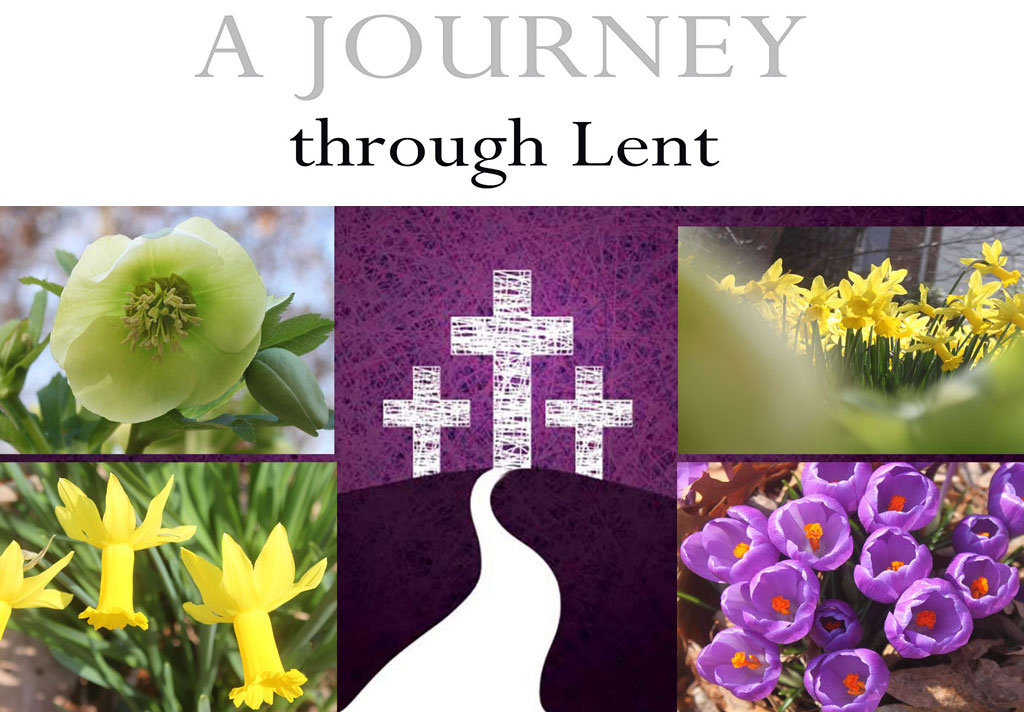
The season of Lent has not been well observed in much of evangelical Christianity, largely because it was associated with "high church" liturgical worship that some churches were eager to reject. However, much of the background of evangelical Christianity, for example the heritage of John Wesley, was very "high church." Many of the churches that had originally rejected more formal and deliberate liturgy are now recovering aspects of a larger Christian tradition as a means to refocus on spirituality in a culture that is increasingly secular.
Originating in the fourth century of the church, the season of Lent spans 40 weekdays beginning on Ash Wednesday and climaxing during Holy Week with Holy Thursday (Maundy Thursday), Good Friday, and concluding Saturday before Easter. Originally, Lent was the time of preparation for those who were to be baptized, a time of concentrated study and prayer before their baptism at the Easter Vigil, the celebration of the Resurrection of the Lord early on Easter Sunday. But since these new members were to be received into a living community of Faith, the entire community was called to preparation. Also, this was the time when those who had been separated from the Church would prepare to rejoin the community.
Today, Lent is marked by a time of prayer and preparation to celebrate Easter. Since Sundays celebrate the resurrection of Jesus, the six Sundays that occur during Lent are not counted as part of the 40 days of Lent, and are referred to as the Sundays in Lent. The number 40 is connected with many biblical events, but especially with the forty days Jesus spent in the wilderness preparing for His ministry by facing the temptations that could lead him to abandon his mission and calling. Christians today use this period of time for introspection, self examination, and repentance. This season of the year is equal only to the Season of Advent in importance in the Christian year, and is part of the second major grouping of Christian festivals and sacred time that includes Holy Week, Easter, and Pentecost.
Lent has traditionally been marked by penitential prayer, fasting, and almsgiving. Some churches today still observe a rigid schedule of fasting on certain days during Lent, especially the giving up of meat, alcohol, sweets, and other types of food. Other traditions do not place as great an emphasis on fasting, but focus on charitable deeds, especially helping those in physical need with food and clothing, or simply the giving of money to charities. Most Christian churches that observe Lent at all focus on it as a time of prayer, especially penance, repenting for failures and sin as a way to focus on the need for God’s grace. It is really a preparation to celebrate God’s marvelous redemption at Easter, and the resurrected life that we live, and hope for, as Christians.
Mardi Gras or Carnival
Carnival, which comes from a Latin phrase meaning "removal of meat," is the three day period preceding the beginning of Lent, the Sunday, Monday, and Tuesday immediately before Ash Wednesday, which is the first day of the Lenten Season (some traditions count Carnival as the entire period of time between Epiphany and Ash Wednesday). The three days before Ash Wednesday are also known as Shrovetide ("shrove" is an Old English word meaning "to repent"). The Tuesday just before Ash Wednesday is called Shrove Tuesday, or is more popularly known by the French term Mardi Gras, meaning "Fat Tuesday," contrasting to the fasting during Lent. The entire three day period has now come to be known in many areas as Mardi Gras.
Carnival or Mardi Gras is usually a period of celebration, originally a festival before the fasting during the season of Lent. Now it is celebrated in many places with parades, costumes, dancing, and music. Many Christians’ discomfort with Lent originates with a distaste for Mardi Gras. In some cultures, especially the Portuguese culture of Brazil, the French culture of Louisiana, and some of the Caribbean cultures such as Trinidad, it has tended to take on the excesses of wild and drunken revelry. There has been some attempt in recent years to change this aspect of the season, such as using Brazilian Carnival parades to focus on national and cultural history. Many churches now observe Mardi Gras with a church pancake breakfast or other church meal, eating together as a community before the symbolic fasting of Lent begins.
Ash Wednesday
Ash Wednesday, the seventh Wednesday before Easter Sunday, is the first day of the Season of Lent. Its name comes from the ancient practice of placing ashes on worshippers’ heads or foreheads as a sign of humility before God, a symbol of mourning and sorrow at the death that sin brings into the world. It not only prefigures the mourning at the death of Jesus, but also places the worshipper in a position to realize the consequences of sin. (See Reflections on Ash Wednesday). Ash Wednesday is a somber day of reflection on what needs to change in our lives if we are to be fully Christian.
In the early church, ashes were not offered to everyone but were only used to mark the forehead of worshippers who had made public confession of sin and sought to be restored to the fellowship of the community at the Easter celebration. However, over the years others began to show their humility and identification with the penitents by asking that they, too, be marked as sinners. Finally, the imposition of ashes was extended to the whole congregation in services similar to those that are now observed in many Christian churches on Ash Wednesday. Ashes became symbolic of that attitude of penitence reflected in the Lord’s prayer: “forgive us our sins, for we ourselves forgive everyone indebted to us” (Luke 11:4, NRSV).





 First Sunday in Lent
First Sunday in Lent